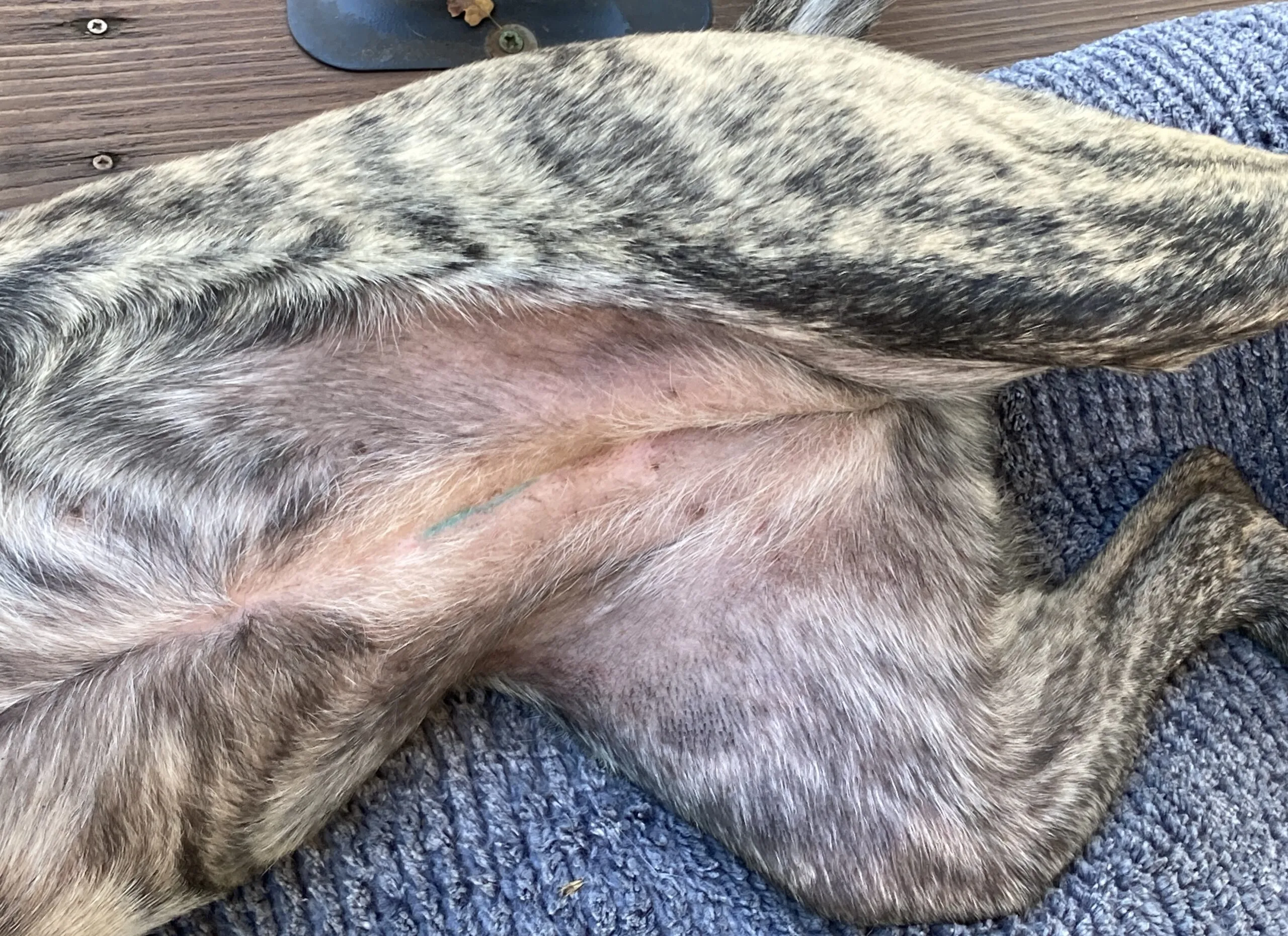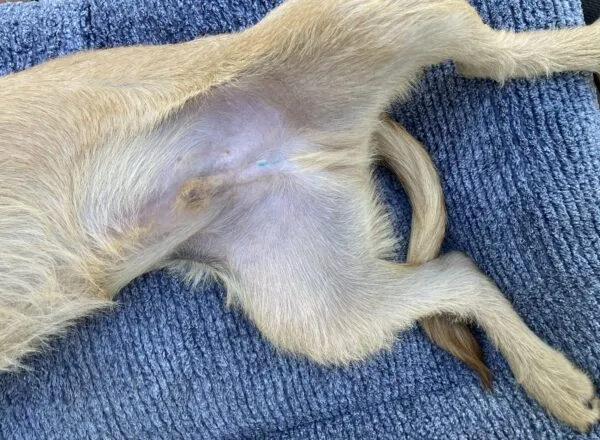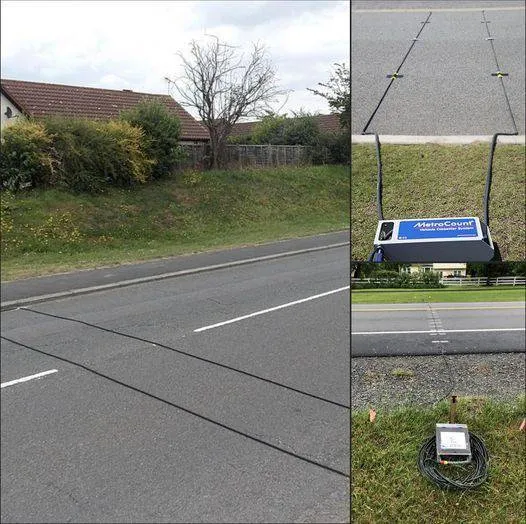Your dog may have a tattoo, especially if they were a rescue. It’s common practice in many animal shelters to tattoo a line on the underside of a dog’s abdomen after they are spayed or neutered. These small green or blue lines are officially called “sterilization indicator tattoos” and they protect the animals from unnecessary medical procedures in the future by proving the dog was already “fixed”.
What is a Dog Spay Tattoo?

These tattoos are typically inked after the procedure while the dog is still under anesthesia. The vet applies ink into a small incision next to the surgical site, or directly on the surgical incision. Then the skin is gently stretched as glue is applied to prevent the ink from bleeding. This tattoo is often difficult to spot if you don’t know what to look for, especially on dogs with long fur.
Who Gives the Tattoos?

This idea originated in 2010 to prevent unnecessary surgery for dogs. However, shelters are more likely to tattoo their rescues than private veterinarians. In fact, Dr. Meaghan Mielo took a survey when she was an intern to analyze the prevalence of this practice. With data from 425 U.S. rescue shelters, veterinary colleges, spay/neuter clinics, and private vets, she deduced that tattoos are not often done. In her report published in The Veterinary Journal in July 2022, she encourages people to adopt this practice to protect animals.
Protecting Dogs

“Dr. Julie Levy and I decided to do this research earlier this year because we noticed many shelter vets were frustrated at how frequently we end up doing unnecessary surgery on an animal who turned out to be already spayed or neutered,” said Dr. Mielo. “Not only does doing an exploratory surgery disrupt the surgical flow of the day, but it’s a much more complicated and lengthy procedure. Additionally, there’s always a risk with anesthesia, and there’s always pain associated with surgery. So if we can find any way to prevent those two things from happening in our patients, I think it’s our responsibility as veterinarians to do that.”
Unnecessary Surgery

Unfortunately, it’s common for Dr. Mielo and other shelter veterinarians to puzzle over the sterilization status of a new animal in their care. “Opening up a female dog or cat and finding out she was already spayed has certainly happened to me often enough to know that it’s a problem,” she said. “Or I’ll shave the abdomen and see what looks like a scar where a spay incision would be. In that situation, I’ll often tell the owner, or the adopter that I believe the pet is spayed, but they should monitor for signs of heat and bring her back if they see them, because I can’t guarantee it. I know it always makes me happy when I find a tattoo on an animal, because I know then I don’t have to wonder, or put them at risk for no reason.”
Do You Actually Need the Dog Tattoo?

The spaying procedure may leave a telling scar but it can be hard to find, unlike a tattoo. Instead of an exploratory surgery, vets will only need to potentially shave some fur to check the dog’s sterilization status. And keep in mind, male dogs benefit from the tattoo as well because the lack of testicles may not be enough to prove the animal was neutered. This is because males may sometimes retain their testicles, have synthetic testicles, or have had a vasectomy (which keeps the testicles but makes the dog infertile).
Why Pets Should Get Tattoos

These tattoos can benefit all animals, not just strays. Private pet owners may assume their dogs don’t need them because they can inform vets if they were neutered/spayed or not. But that doesn’t account for potential situations where they may not be available. For example, a dog may have a medical emergency and see a vet without their owner. They may also end up at a shelter because they got lost or their owner could no longer take care of them, and their medical records may not be accessible. Making these tattoos standard procedure benefits the owners, vets, and dogs.


